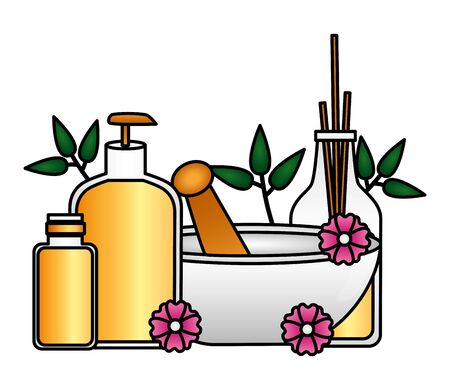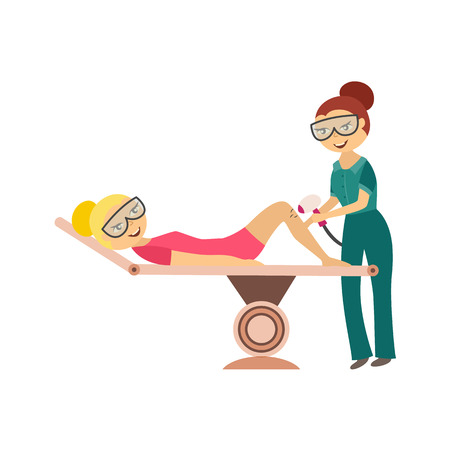Introduction to Indian Oil Massage Traditions
India’s rich heritage is deeply intertwined with ancient wellness practices, and oil massage—locally known as abhyanga—stands out as a core ritual across the subcontinent. From the bustling streets of Mumbai to the tranquil backwaters of Kerala, abhyanga has been cherished for centuries as more than just a method of relaxation; it is an integral part of daily life and self-care. Rooted in the time-honoured wisdom of Ayurveda, Indias traditional system of medicine, oil massage is believed to balance the body’s energies (doshas) and promote overall health. Every region in India brings its own flavour to this tradition, blending unique oils, herbs, and techniques shaped by local customs and climate. Whether performed at home by family members or by skilled therapists in Ayurvedic centres, abhyanga holds cultural significance—often marking important occasions like childbirth, festivals, or simply serving as a daily act of nourishment and bonding. This practice not only nurtures the body but also connects individuals with their heritage, making it an essential aspect of Indian life that continues to thrive across generations.
2. Regional Oils and Signature Techniques
India’s vast geography and diverse climates have shaped unique oil massage traditions across its states, where both the choice of oil and signature techniques reflect local resources, beliefs, and health philosophies. Let’s dive into how different regions use specific oils and methods that make their massages distinctively Indian.
Regional Oils: Nature’s Gifts
The selection of oil is never random in India—it is deeply rooted in what grows locally and what the climate demands. Here’s a quick look at some popular oils used in different states:
| Region/State | Main Oil Used | Local Relevance |
|---|---|---|
| Kerala (South India) | Coconut Oil | Cools the body, nourishes hair & skin, suitable for humid climates |
| North India (Punjab, Uttar Pradesh, etc.) | Mustard Oil | Warms the body, believed to improve blood circulation in colder regions |
| Maharashtra & Gujarat | Sesame Oil (Til ka tel) | Balances Vata dosha, deeply penetrates for joint health |
| Bengal (West Bengal) | Sarson Tel (Mustard Oil) | Aids muscle relaxation, common household remedy for aches |
Signature Techniques Across States
It’s not just about the oil—the way it’s applied also varies dramatically from state to state, influenced by Ayurveda, tribal traditions, or local healing systems.
Kerala: The Land of Abhyanga and Pizhichil
Kerala is synonymous with Ayurvedic oil massages. The classic ‘Abhyanga’ involves synchronized strokes by two therapists using warm coconut oil, while ‘Pizhichil’ is known as “oil squeezing,” where warm medicated oil is poured over the body in a continuous stream. Both aim to detoxify and rejuvenate.
North India: Mustard Oil Massage for Winter Warmth
In North Indian households, especially during winter months, mustard oil massage—locally called “tel malish”—is a ritual for children and elders alike. Vigorous strokes are used to stimulate blood flow and generate heat, keeping the body supple against the cold.
Maharashtra & Gujarat: Til Malish Rituals
Til ka tel (sesame oil) is popular in Maharashtra and Gujarat for its ability to penetrate deep into tissues. The massage technique here often includes circular motions around joints and long strokes along limbs—believed to keep ‘Vata’ energy balanced according to Ayurveda.
Bengal: Sarson Tel’s Everyday Healing Touch
Bengali families swear by sarson tel massages for everything from post-bath relaxation to relief from minor sprains. The focus here is on kneading and gentle pressure to ease muscle tension—a tradition passed down through generations.
The diversity in regional oils and techniques isn’t just about preference; it’s an adaptation to environment, culture, and traditional wisdom—a living testament to India’s holistic approach to wellness.

3. Ayurvedic Influence and Healing Benefits
Ayurveda, India’s time-honoured system of medicine, holds oil massage—or Abhyanga—as a cornerstone of holistic wellness. Rooted in ancient Sanskrit texts, Ayurveda teaches that health is achieved when the body’s three doshas—Vata, Pitta, and Kapha—are balanced. Oil massage is not just a daily routine for many Indians; it’s considered a sacred ritual that aligns the mind and body.
Understanding the Principles of Ayurveda
The guiding principle of Ayurveda is to maintain equilibrium among the doshas. This balance ensures physical vitality and mental clarity. An oil massage is often recommended by Ayurvedic practitioners as part of Dinacharya (daily self-care rituals), believed to detoxify tissues, promote circulation, and calm the nervous system.
Dosha-Specific Oils: Tailoring Wellness
The choice of oil is crucial in Indian traditions. For Vata types, who are prone to dryness and anxiety, nourishing sesame or almond oils are used for their warming properties. Those with a dominant Pitta dosha benefit from cooling coconut or sunflower oil to soothe inflammation and irritability. Kapha individuals, who may struggle with lethargy or congestion, opt for invigorating mustard or olive oils to stimulate energy flow. These choices reflect how deeply personal and customisable the practice is across Indian states.
Oil Massage: A Ritual Beyond Relaxation
In Indian homes, especially in Kerala and Tamil Nadu, Abhyanga is more than just physical relaxation—it’s viewed as an essential act of self-respect and rejuvenation. Many families set aside time weekly or even daily for this ritual, seeing it as a way to build immunity, strengthen relationships (when performed by loved ones), and foster emotional balance. Across states like Maharashtra and Karnataka, traditional oil massages are performed before important festivals or life events, reinforcing their role as both preventive healthcare and a celebration of cultural identity.
4. Family, Ritual, and Community Practices
Oil massage in India is far more than a health practice—it is woven into the fabric of family life, religious rituals, and community bonding. Across different states, the tradition of oil massage takes on unique forms but always highlights the importance of human connection and cultural continuity.
Mother-Baby Massage: The First Bond
The ritual of massaging newborns with oils is an age-old Indian tradition, passed down from grandmothers to mothers. Known locally as maalish in Hindi or abhyanga in Sanskrit, this daily practice is believed to promote physical strength, enhance circulation, and foster emotional security between mother and child. In Kerala, for example, virgin coconut oil is preferred, while North Indian families might use mustard oil or almond oil. The act itself becomes a cherished moment of bonding and care.
Popular Oils Used in Mother-Baby Massage Across States
| State/Region | Preferred Oil | Local Term |
|---|---|---|
| Kerala | Coconut Oil | Kai Vaykkal |
| Punjab & Haryana | Mustard Oil | Maalish |
| Maharashtra | Til (Sesame) Oil | Anga Raga |
| Bengal | Almond Oil/Mustard Oil | Sneho-matrika Maalish |
Festival Rituals: Invoking Auspiciousness and Renewal
Oil massage is also integral to many festival rituals across Indian states. During Diwali, in Maharashtra and Gujarat, families gather early morning for the traditional Abhyangasnan—an auspicious bath after a sesame oil massage—to cleanse negativity and welcome prosperity. Similarly, in Tamil Nadu’s Pongal festival, a pre-bath oil massage signifies renewal and gratitude for abundance.
Key Festivals Featuring Oil Massage Rituals
| Festival | State/Region | Cultural Significance |
|---|---|---|
| Diwali (Abhyangasnan) | Maharashtra/Gujarat/Karnataka | Auspicious cleansing before festivities begin; believed to bring luck. |
| Pongal/Sankranti | Tamil Nadu/Andhra Pradesh/Karnataka | Ritual purification; marks new harvest and gratitude. |
| Shravan Maas Rituals | Northern India (UP/Bihar) | Cleansing rites during holy month for spiritual purification. |
Community Settings: Strengthening Social Bonds through Touch and Care
The communal aspect of oil massage is especially visible during large gatherings such as weddings or local festivals when professional masseurs (malishwalas) are invited to offer massages to entire families or neighborhoods. In rural villages of Rajasthan or West Bengal, it is not uncommon for men to gather at local akharas (wrestling grounds) for group massages using herbal oils before wrestling sessions—a testament to camaraderie and mutual support. These practices reinforce trust, respect, and a sense of belonging within communities.
This deep-rooted tradition—whether practiced in intimate family circles or large community settings—demonstrates how oil massage goes beyond health benefits to nurture social harmony and cultural identity across Indian states.
5. Modern Adaptations and Urban Trends
In todays fast-paced Indian cities, the way people experience oil massage has evolved significantly from traditional settings. The pressures of urban life, demanding jobs, and limited family time mean that few urban Indians have the luxury to indulge in lengthy home massages as their ancestors did. However, this does not mean the ancient practice is fading away. Instead, modern Indians are finding innovative ways to keep these traditions alive while adapting them to their dynamic lifestyles.
Spa Culture: A New Take on Old Traditions
The rise of wellness spas and Ayurvedic centres in metros like Mumbai, Delhi, Bengaluru, and Hyderabad has given traditional oil massage a contemporary twist. These spaces combine age-old techniques with modern amenities, offering everything from Abhyanga (Ayurvedic oil massage) to fusion therapies that mix Indian oils with global massage styles. For many professionals, a weekend spa visit is both a health investment and a stress-buster—a far cry from the long sessions at home but still rooted in Indian healing wisdom.
Home Services and Digital Convenience
With the boom of app-based services such as UrbanClap (now Urban Company), it is now possible to book a trained masseur for an authentic oil massage at home. This trend caters especially to young couples or working parents who crave relaxation but lack time for elaborate rituals. The convenience of scheduling a massage after office hours or during weekends makes it easier for urbanites to retain this wellness habit amidst their hectic routines.
Changing Oils, Changing Preferences
Urban Indians are also experimenting with different oils based on personal preferences and health goals. While coconut and sesame oils remain popular, there is growing interest in almond, jojoba, or herbal-infused blends promoted by beauty influencers and Ayurveda doctors alike. The focus has shifted towards lighter oils that suit city climates and individual skin types—showing how tradition adapts without losing its essence.
The Social Shift: From Family Rituals to Self-Care
Earlier, oil massages were deeply embedded in family routines—mothers massaging children or grandmothers guiding new mothers through postnatal care. Today, while these communal practices are less frequent in cities, the idea of self-care has taken centre stage. Whether its young professionals investing in weekly spa sessions or parents seeking quick rejuvenation through mobile services, the cultural sentiment remains: oil massage is still seen as essential for physical and mental well-being.
Looking Forward: Blending Heritage with Modernity
The evolution of oil massage among urban Indians reflects a broader trend—respect for heritage combined with the realities of modern living. By embracing technology, professional services, and new wellness philosophies, city dwellers ensure that Indias rich tradition of therapeutic oil massage continues to thrive even in a changing world.
6. FAQs and Local Wisdom
Frequently Asked Questions about Oil Massage in India
Is oil massage a daily tradition across all Indian states?
No, the frequency and style of oil massage (also called “Abhyanga” in many regions) vary by state and community. In Kerala and Tamil Nadu, it is common to practice oil massages regularly, even daily for infants and elders. In northern states, it might be limited to once a week or during special occasions.
What are the most popular oils used for massage in different regions?
Coconut oil is favored in Kerala and coastal regions due to its cooling properties, while mustard oil is common in Punjab and Bengal for its warming effect. Sesame oil is traditional in Tamil Nadu and Andhra Pradesh. Ayurvedic herbal oils are also widely used for therapeutic purposes.
Can I perform oil massage at home, or should I visit a professional?
Many Indians continue the tradition of home massages, especially for babies, new mothers, and elders. However, for specific health issues or authentic Ayurvedic treatments, visiting a trained therapist is recommended.
Local Sayings & Wisdom
“Tel malish, champi – you’ll feel like a king!” This popular Mumbai phrase reflects how an invigorating head massage is believed to refresh both body and mind. Across India, elders often say, “Doodh peene se shareer banta hai, tel lagane se tandurusti rehti hai,” meaning “Milk builds the body; oiling maintains health.”
Contemporary Perspectives & Home Remedies
With modern lifestyles, urban Indians often blend traditional wisdom with convenience. Many use ready-made Ayurvedic oils or blends with essential oils for relaxation after work. Grandmothers still recommend applying warm coconut oil before bathing to improve skin tone and reduce stress. For muscle pain or cold weather, mustard oil with a pinch of turmeric is massaged onto joints—a remedy still trusted today.
Quick Tips from Local Experts:
- Avoid cold water immediately after an oil massage; use lukewarm water for better absorption.
- For hair strength: Mix castor oil with coconut oil and massage into the scalp once a week.
- If sensitive skin reacts to certain oils, switch to almond or olive oil as milder alternatives.
This fusion of ancestral knowledge and modern science continues to keep India’s oil massage culture vibrant across generations and geographies.


